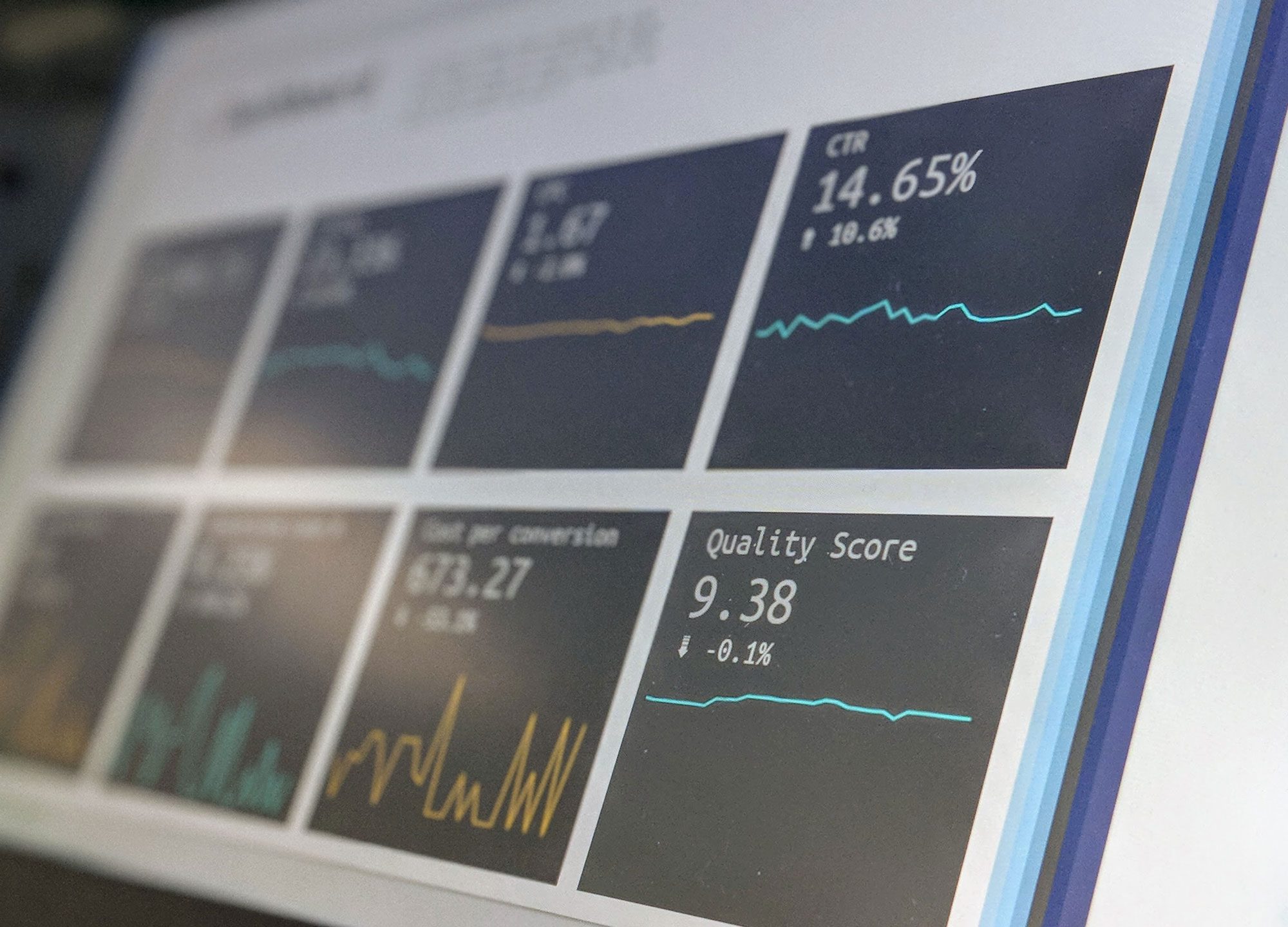Big Data for Marketing

The digital evolution has enabled companies, such as yours, to know more about their customers. In the past, you could perhaps count the number of people coming to your store. But could you measure how many people looked at one specific product? How many went from looking at one product to another? Or how many just walked in and decided to leave without buying anything? Data has given you the power to know more not only about your customers behaviour but also about their interests and what may entice them to purchase. Data is everywhere and it can help organisations in any industry and in many different ways. Big data is a term to describe any type of data that is defined within the “three V’s”. I.e Large volumes of data, a complex variety or variation of data, and velocity on the speed of data. All of which is often far too overwhelming for most businesses to deal with, organise, respond to in a timely nature, or to even make accurate decisions upon.
“Our graphs show the typical evolution of mobile based queries and ad auction metrics over the last 4 years in Australia, so we’ve outlined the main points that you may find useful here. ”
Megan Stuber
Digital Strategist – Glide
Let’s dive into the challenges that you can run into when using big data . It can be choosing the right software to store your data (like the one in the image below) for example. I think it would be beneficial to also explore the main advantages you can get from correctly utilising it. Once I have explained the advantages and challenges, it would be good to note the importance of mobile data and how it is changing the way companies collect data.
The challenges associated with big data analytics
With the evolution of the online world, new opportunities have risen. Big data analytics allows businesses to take advantage of those opportunities with precious insights into the consumers. However, there are several challenges that businesses will have to overcome in order to take full advantage of it. The biggest challenges that big data presents for modern day businesses are:
- To use the right tools and methods to capture, track, transfer and store data
- To extract value from data
- To ensure that the data is accurate
Let me explain each of those a bit more and how you can tackle them.
To use the right tools and methods to capture, track, transfer and store data
To utilise big data, you will need the right tools that will do all the “dirty work” for you. Whether you want to use Google Analytics, Google Adwords coupled with a Marketing Automation software or just an Email Marketing software, you will need something that will extract the data and put it into understandable graphs and reports for you. There are plenty of tools out there that capture different kinds of data. And depending on what you want to achieve or what kind of information you need, you may have to use a few. Google Analytics, for example, will offer insights into your website performance and your customers behaviour. It won’t, however, help you nurture your prospects. For that, you will need another software, such as a Marketing Automation one for example.
Once you have the data on hand, get your Marketing Automation software to personalise your nurturing efforts with different content depending on behaviour, interests etc. It can be overwhelming for businesses to choose between all the different kind of data tools. However, the first step is to have clear objectives: what do you want to measure? What do you want to achieve etc. Once you know that, the second step is to extract the value from the tools you have chosen. Let’s see why you or other companies may face challenges when it comes to that point.
To extract value from data
To extract the maximum value from your big data analytics, you will need to establish key metrics and analysis for querying, visualisation and planning i.e spotting business trends. The goal is to use the data you gather to give you deeper insights into your customers in relation to your business. Start small and make your way through the different layers of information that big data gathers. Build on what you learn to set up new strategies and collect new data. Remember that you can always test, analyse, and measure. Which means that your initial analysis can be explored further down the line.
You will also need to establish what kind of data goes to who? A CMO may need to see different data than a social media manager for example. Make sure you have data that will be useful for your entire team while helping the overall growth. Lastly, it may feel a bit overwhelming at first. Extracting the value from your data is not an easy task. But start small and build on what you learn. Set a few key objectives or key metrics to measure and review your strategy once you feel more comfortable with the software and the data you extract. However, key objectives and understanding are not the only elements that will help you take advantage of your data. Before everything, you need to ensure that your data is accurate. How? Let’s take a look.
Ensuring your data is accurate
Another challenge that a lot of marketers face is to ensure that their data is accurate. If the data is not correct, it could lead you to making the wrong decisions and could ultimately have detrimental effects on your company. However, as you get more comfortable with the different softwares you are using, it will become easier to spot a mistake. There are several ways to make sure you have the right data. For example, check your data against another source if possible. I.e, use the search console against Google Analytics. You can also document your process to make sure you are doing the right steps and not forgetting to do anything.
Lastly, you can also get feedback from others who may be more comfortable than you are with the data or the specific software you are using. No matter what technique you use, once you can confirm that your data is accurate, you will be more confident in your decision making. This will also lead to increased efficiencies, cost reduction and prevent ad spend wastage.
The advantages of big data
Now that we have seen the main challenges, it would be good to see why every business, including yours, needs to use big data analytics. Let’s dive into the advantages such as being able to measure your site performance, just like the image below shows. Marketers should definitely use data to gain more insights into their customers and make better informed business decisions. Big data analytics will not only enable you to measure the traffic on your website but will also help you:
- Get a better idea of who your personas are
- Learn how to engage better with your customers
- Improve customer loyalty and retention
- Optimise your marketing efforts and performance
- Help you make better budget management decision
Let’s take a look at each of these into greater details.
Who are your personas?
Do you know who your audience is? What they want, what they fear, where they are, how old they are etc.? Whereas you could only make educated guesses before the online world, analytics data gives you tangible insights that will help you establish who your ideal customers are. Thanks to big data, you can now clearly understand the demographics and geographical locations of your leads. But more than that, you can see where they are coming from – social media? An external link? A paid ad? You can also see which buttons they clicked and how often they stayed on your website. All and all, once you understand your customer profile, you will be able to then personalise your content to target their specific needs, nurture your prospects better, and increase their chance of conversion.
Nurture better
Thanks to big data, you will be able to nurture better and smarter. How? Because it will be personalised. Big data will give you precious insights into where each of your customer is at in your sales cycle or what he or she is interested in. Based on that data, you can then personalise the content you serve each of your leads and improve their customer experience. But how exactly can you personalise your content? Thanks to softwares such as Marketing Automation or algorithms, you can set a rule that says “when a customer fulfills this criteria, serve him or her this content”. You can change basically everything – from the images or the text content on your website to the resources you automatically send a lead after he has asked for more information about a specific topic.
You are not shouting the same message at an entire demographic but rather, with the help of analytics data, you are able to provide a unique experience to each one of your prospects that is tailored to their specific needs, whether they are new customers or returning ones. It can also help you improve customer loyalty and retention. How? Let me explain it in a bit more details.
Improve customer loyalty and retention
Because data helps you keep track of how active each of your customers are, you can easily (and automatically!) reward the ones who keep coming back to you and encourage the others to do the same. A lot of companies have introduced a “loyalty” element to their business strategy. The more someone comes back, the more rewarded they will be. Plus, because you know your prospects’ interests, you can personalise your loyalty program and give different rewards to different categories or groups of leads. So once you are done serving the right content to the right leads, how do you know if your efforts have been worth it? Big data will help here too. Let’s see how.
Optimise your marketing efforts and performance
Because of its tracking ability, big data allows you to measure your marketing efforts and performance. Thanks to it, you will be able to see your end-to-end ROI and this will ultimately lead to better decisions. By constantly measuring, testing, and analysing, you will ensure that your different marketing tactics are fully optimised and perform their best at all time. Plus, because you can not only analyse your own tactics but the overall trends, you will be able to know what people want.
For example, Google Trend shows you trending topics and how often a particular search term has been used. Big data will help you measure whether your tactics work and also how to adjust your efforts compared to the local or global trends. But most important of all, it will also help you budget better. Let me explain this a bit more in depth.
Better budgeting decision
At the end of the day, you are trying to make money. Big data, through all of the elements mentioned before, will help you measure how effective each one of your marketing efforts are. From this, you will be able to see if you need to put more money into one tactic or reduce your budget for another one. Big data analytics will help you understand where your time and your money should go. Now that I have talked a little about the benefits and challenges of using big data and analytics, we have to note the surge of mobile data, which differs from laptop data reporting as we can see below, and the effect it has had on big data.
The Surge Of Mobile Data
A compelling amount of growing data sets is due to the rapid adoption and usage of mobile devices. As a result, we are now seeing phenomenal growth of between 30% to 50% within 1 calendar ‘quarter’ to the next. So this means that data is now growing at an exponential and alarming rate. Because of this, businesses will now more than ever need to organise their data and analytics, shift to a customer-centric model and develop innovative strategies to utilise that data to build on business growth. The surge of mobile data is changing the world of marketing in two ways:
- It allows businesses to make better informed business decisions
- It creates a new “out-of-home” advertising model
Let’s take a look at each of those.
Mobile data for better informed business decisions
Thanks to the data offered by mobile devices, you can gather much more precise data, such as location. Thanks to phones, you can now track very specific audiences. You will not only be able to personalise your content marketing but you can also decide whether or not to open a new store at a specific location for example.
A new “out-of-home” advertising model
This new mobile trend means that you get more insights about your customers throughout the day. No need to wait until they are back at home or in front of a computer anymore. Mobile phones have allowed companies to keep track of how consumers act and the way they consume throughout the day.
A final word…
As the online world is developing, it is now possible to track your customers. Who are they? Where do they come from? Big data will help you know your customers better. It will also ensure you make the best business decisions with the insights you collect. Mobile data is an added bonus to the (already many) advantages offered by big data analytics as it shows you what your customers are up to throughout their day. The morale of the story is that you should definitely include big data in your marketing strategy. Know your customers better and use your knowledge to make your products and services irresistible with big data analytics.








